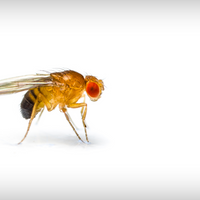sex differences

Sex Differences in Immune Responses to Viral Infection
Catherine Offord | Mar 1, 2021 | 10+ min read
Stronger interferon production, greater T cell activation, and increased susceptibility to autoimmunity are just some of the ways that females seem to differ from males.

Infographic: How SARS-CoV-2 Immune Responses May Differ by Sex
Catherine Offord | Mar 1, 2021 | 2 min read
Males and females show differences in gene expression, cell activation, and antibody production in response to some viral infections, but whether these influence COVID-19 outcomes is still unclear.

Infographic: Dialing Down the Glitz
Rachael Moeller Gorman | Sep 1, 2020 | 1 min read
The gene BCO2 enables male and female members of some bird species to display dramatically different color patterns.

The Gene that Makes Female Birds Drab
Rachael Moeller Gorman | Sep 1, 2020 | 3 min read
In some finch species, the difference between colorful males and muted females comes down to one gene, BCO2, which encodes an enzyme that degrades carotenoids.

Male Flies’ Y Chromosome May Contribute to Earlier Deaths
Jef Akst | Jul 13, 2020 | 2 min read
As male Drosophila grow old, selfish genetic elements that are abundant on the Y chromosome become more active, which appears to reduce longevity.

Females Gain Ground as Biomedical Research Subjects
Shawna Williams | Jun 9, 2020 | 2 min read
A study finds improvement in the proportion of scientific projects that include both sexes, but analyzing results by sex is not routine.

Why Some COVID-19 Cases Are Worse than Others
Katarina Zimmer | Feb 24, 2020 | 7 min read
Emerging data as well as knowledge from the SARS and MERS coronavirus outbreaks yield some clues as to why SARS-CoV-2 affects some people worse than others.

Why Is Cancer More Common in Men Than in Women?
Jef Akst | Apr 1, 2019 | 4 min read
The molecular processes that lead males to be more susceptible to the disease are only beginning to come to light.

Men React to Repeated Painful Experiences Differently than Women Do
Diana Kwon | Jan 14, 2019 | 4 min read
Men’s pain tolerance decreases when exposed to a setting where they’ve previously had a painful experience.

A Retracted Paper on Sex Differences Ignites Debate
Anna Azvolinsky | Sep 27, 2018 | 8 min read
Controversy surrounding a mathematical model to explain the so-called “greater variability of males” hypothesis fells two versions of a paper—but critics of the work wish it were still published.

Are the Brains of Transgender People Different from Those of Cisgender People?
Shawna Williams | Mar 1, 2018 | 10+ min read
Research into the biological basis of gender identity is in its infancy, but clues are beginning to emerge.

Sex Differences in Opioid Analgesia: A Complicated Picture
Catherine Offord | Jan 1, 2018 | 5 min read
Researchers are beginning to tease apart the mechanisms underlying differences in how males and females respond to powerful painkillers.

Sex Differences in Human Gene Expression
Jef Akst | May 4, 2017 | 2 min read
Researchers uncover thousands of genes whose activity varies between men and women.

How Much Do Sex Differences Matter in Mouse Studies?
Joshua A. Krisch | Feb 23, 2017 | 4 min read
Examining both male and female model organisms is worth the extra effort and added costs, most experts maintain, but whether the results translate to human studies is less clear.

Moving Past the Myth of a Simple Biological Difference Between the Sexes
Cordelia Fine | Jan 1, 2017 | 3 min read
The public may still believe that male-specific traits, such as high testosterone levels, lead to many of the gender inequalities that exist in society, but science tells a different story.

Contributors
Ben Andrew Henry | Jan 1, 2017 | 3 min read
Meet some of the people featured in the January 2017 issue of The Scientist.

Sex Differences in Immune Response
Tanya Lewis | Jun 21, 2016 | 2 min read
Female mice lacking an immune receptor are better than males at fighting certain viral infections.

Speaking of Neuroscience
Bob Grant | Oct 22, 2015 | 1 min read
A selection of notable quotes from the Society for Neuroscience meeting

Sex Differences in TBI
Bob Grant | Oct 20, 2015 | 2 min read
Researchers are finding that male and female mice may respond to traumatic brain injuries differently.

Newfound Neurons
Tracy Vence | Oct 19, 2015 | 1 min read
Researchers identify a new type of brain cell in male Caenorhabditis elegans.
